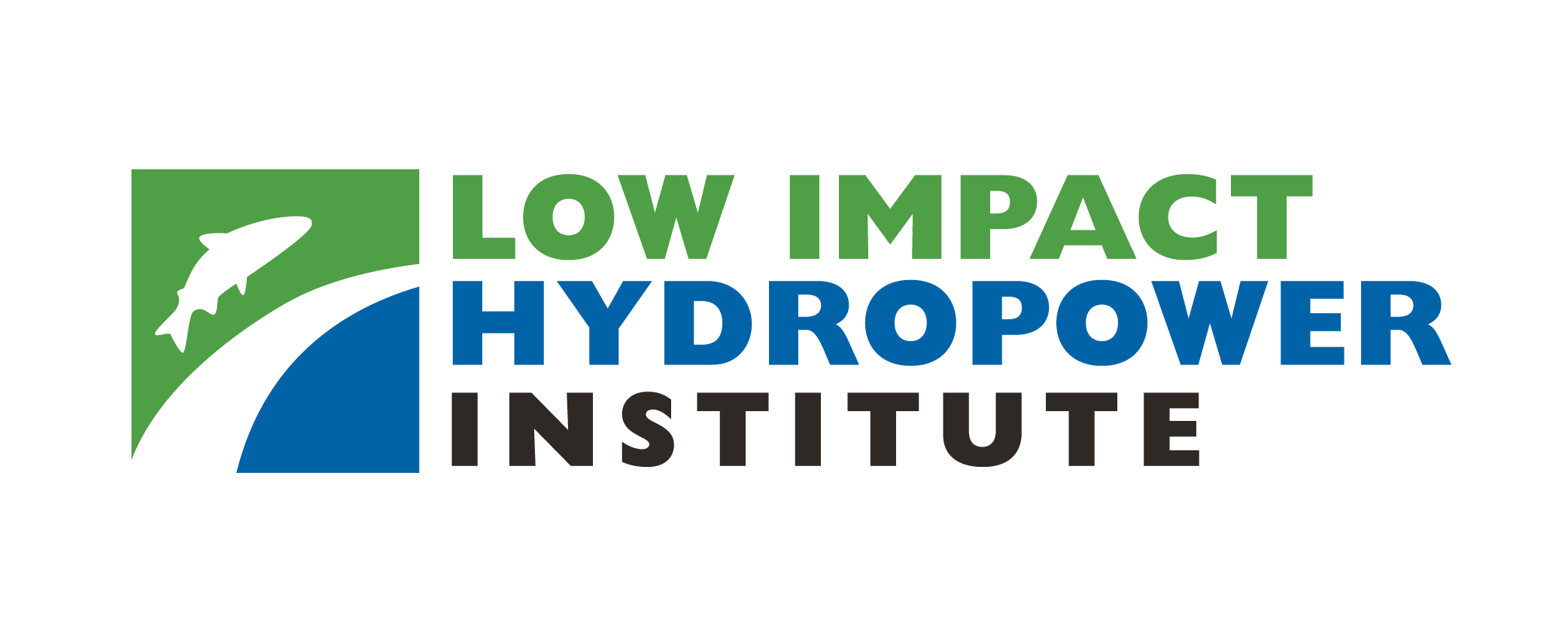LIHI 证书 #200 - 俄勒冈州门罗投放项目

| 项目名称 | 梦露掉落 |
| LIHI 证书编号 |
200 |
| LIHI 证书期限 |
2023年2月9日-2033年2月8日 |
| 所有者 | 现在能源系统 |
| 状态 | 俄勒冈州 |
| 地点 | 北单位灌溉区主干道 运河 |
| 装机容量 | 0.3兆瓦 |
| 平均年发电量 | 1,078 兆瓦时 |
| 设施类型 | 连续 运河 (仅当管道内有足够流量时才运行) |
| 联邦能源管理委员会 不。 | P-14430. 导管 豁免 2014年8月1日发布 |
Monroe Drop 项目位于德舒特河 流域 位于俄勒冈州杰斐逊县卡尔弗镇附近的美国垦务局(USBR)北部灌溉区主运河(NUMC)。NUMC和门罗滴灌设施是由北部灌溉区(NUID)运营的灌溉设施,主要用于向杰斐逊县近5万英亩农田输送灌溉用水。北部灌溉项目始建于1938年,并于1949年竣工。
灌溉项目的水源来自德舒特河和克罗基德河。水从威基厄普流出 水库 流入德舒特河,克罗基德河的水流经一座抽水厂,然后被引流至俄勒冈州本德市的全国灌溉委员会 (NUMC)。从那里,水通过北部灌溉区 65 英里的主渠和 235 英里的支渠到达用户。
主运河的门罗落差结构由一个35英尺长、15英尺高的混凝土开放式灌溉落差组成,其上游和下游均设有带翼的混凝土过渡段。水流在此结构处落差在13.5英尺至16.5英尺之间,具体取决于流量。落差结构内设有一个自动闸门,用于控制流经主运河的灌溉水的正常流量。
该水力发电设施于 2015 年建成,包括一个 12 英尺宽、61.5 英尺长的混凝土进水渠、一个 63 英尺长、84 英寸直径的 压力水管,长 25 英尺,宽 44 英尺 发电站 包含一个涡轮/发电机组,一个约 50 英尺长的矩形截面 导流管 入口尺寸为 43 英寸宽、54 英寸高,从发电站延伸至运河底部,一条 2,200 英尺长的电力线埋在运河服务道路下的管道中,与 PacifiCorp 拥有和运营的 12.5 kV 配电线相连。
主运河上的 Obermeyer 闸门 泄洪道 控制 头 闸门在现场安装,并在灌溉季节保持完全充气状态。在运河除草期间,闸门会降低,以便所有运河杂物通过,而不会堵塞设施。闸门是运河操作系统的一部分,而不是水电项目的一部分。
原有的250千瓦SLH水轮机于2020年被300千瓦的Natel MSD190鱼安全坑式修复水轮机(RHT)取代。RHT是一款紧凑型水力涡轮机,兼具高性能和安全的贯穿式鱼道。其独特的鱼安全叶片经过加厚处理,并针对低水头应用进行了优化,无需使用精细的鱼网,从而降低了成本并提高了电厂效率。
该项目采用“径流式”模式运行,仅在灌溉季节(四月至十月)利用流经落差结构的可用水量发电。在电站紧急停电期间,通常流经电站的水量仍会留在运河中。Obermeyer闸门会自动调节,以保持落差结构上游的恒定水位,并维持其下游的流量,并且通常在灌溉季节保持完全充气状态。项目运营不会影响向灌溉用户供水的时间和地点。灌溉季节结束后,运河将被排干。
该运河系统并非天然河流系统,作为人工结构,它并不支持水生生物。俄勒冈综合报告的在线地图工具显示,位于 导流 由于温度、生物指标、磷和总溶解气体的影响,鱼类和水生生物的生存受到损害。主运河引水处的德舒特河水温和pH值受到影响。由于该项目位于干草堆水库上游6英里处,该河段的运河系统沿线有5560个高度不等的类似落差,因此该项目不太可能对溶解氧水平产生任何影响。鉴于项目进出水口距离较近且缺乏蓄水设施,水温也不太可能受到项目运营的影响。
项目附近的德舒特河和克罗基德河没有任何洄游鱼类。此外,运河从11月到次年3月或4月处于脱水状态,因此不存在全年鱼类栖息地。主运河引水口 坝 位于德舒特斯河上,距离门罗瀑布上游 37 英里处,配备了垃圾架和鱼类筛选装置,但不符合当前的州标准。俄勒冈州鱼类和野生动物部 (ODFW) 报告称,在主运河引水口下游的脱水运河中观察到红带鳟鱼、褐鳟鱼和山白鲑等留鱼搁浅;在位于项目运河下游 6 英里处的 Haystack 水库中观察到红鲑。在灌溉季节,任何从运河引水口下游游动的鱼类都可以继续通过项目下游,但如上所述,它们可能会在运河脱水期间搁浅在下游,或者如果到达 Haystack 水库则无法产卵。NUID 报告称,他们与德舒特斯盆地控制委员会、德舒特斯河流域保护协会和志愿者合作,在秋季脱水时从运河中救出了鱼类。然而,Natel 的 Restoration 水力涡轮机已被证明能够提供安全的 鱼道 在实验室和现场测试中。在纳塔尔测试设施的测试中,即使在涡轮机全功率运转的情况下,银期美洲鳗的存活率也达到了100%,且几乎不会造成伤害或影响。在自由瀑布项目(LIHI #178)的现场测试中,幼年鲱鱼的48小时存活率也达到了100%。涡轮机的设计是一项创新技术,部分原因在于叶片前缘的厚度,这种设计旨在降低叶尖速度,最大限度地降低撞击概率和对鱼类的伤害。
该项目本身不会对下游鱼类通道或鱼类保护产生不利影响。此外,项目业主无法合理地影响NUID的行动或实施长期提议的计划。 鱼屏 但随着新资金的涌入,未来几年内很可能安装筛选装置。NUID已获得拨款,用于更换主引水坝的鱼类筛选装置。
项目用地包括约2英亩的联邦土地,位于克罗基德河国家草原,由奥乔科国家森林管理(其中0.89英亩用于建设发电站,1.2英亩用于建设输电线)。该草原(由美国林务局管理)用于牧场、鱼类和野生动物养殖、休闲娱乐、矿物开采和薪柴生产,对项目没有直接影响。运河西侧土地主要为农业用地,东侧为克罗基德河国家草原。作为输油管道项目,项目运营不会对海岸线或流域产生影响。项目区域内不存在具有生态价值的土地,也不存在受威胁或濒危物种的关键栖息地。经与俄勒冈州鱼类和野生动物管理局(ODFW)和美国鱼类及野生动物管理局(USFWS)磋商,确定项目区域内不存在受威胁或濒危物种。
Monroe Drop 建筑和运河是历史遗产,有资格列入 国家历史遗迹名录2013年,俄勒冈州历史保护办公室 (SHPO) 认定项目安装将对符合条件的历史遗产产生不利影响。因此,项目业主与SHPO合作,以减轻这些影响。随后更换的涡轮机被认定不会对历史遗产造成影响。
该项目不包含任何休闲资源或用途。出于安全考虑,NUID 禁止公众进入主运河。不过,附近还有其他休闲资源,包括以钓鱼、露营、划船和日间活动而闻名的 Haystack 水库,以及 Crooked River 国家草原。
合规状态
当前证书中没有针对设施的特定条件。
2025:未发现任何重大变更或合规问题。根据年度审查,该项目仍然合规。NUID 在其网站上报告称,他们已获得拨款,用于更换 鱼屏 关于转移。
2024:未发现任何重大变更或合规问题。根据年度审查结果,该项目仍然合规。
2023:当前证书的年度报告尚未生效。
认证历史
2023 年 6 月 8 日: 低影响水电研究所已就门罗瀑布水电项目的认证发布了最终决定。认证期限为2023年2月9日,为期10年,将于2033年2月8日到期。
2023 年 5 月 8 日: 低影响水电研究所 (LIHI) 已初步批准 Monroe Drop 水电项目获得低影响认证。完整申请及审核报告如下。此决定尚待 30 天的申诉期过后才能做出。只有在 60 天的评论期内对初始申请发表意见的人员才有资格提出申诉。此类申诉需包含项目为何不符合 LIHI 标准的解释。申诉请求可通过电子邮件发送至 comments@lowimpacthydro.org 主题行中请注明“Monroe Drop Project”,或邮寄至 Low Impact Hydropower Institute,地址为 1167 Massachusetts Ave, Arlington, MA 02476。所有申请都将发布在网站上。申请人将有机会作出回应,任何回应也将发布。 请求必须在 2023 年 6 月 7 日东部时间下午 5 点之前收到。 如果没有收到上诉请求,认证期限将为 2023 年 2 月 9 日至 2033 年 2 月 8 日。
2023年4月10日: 应利益相关方要求,Monroe Drop 的评论期已延长一周。评论期将于 2023 年 4 月 17 日结束。
2023年2月9日: 低影响水电研究所 (LIHI) 已收到门罗瀑布水电项目低影响认证的完整申请。LIHI 正在就此申请征询公众意见。具体而言,我们想知道您是否认为该项目符合 LIHI 低影响认证标准(第二版手册中修订版)。请查看 LIHI 修订版中的项目和标准。 手册 然后查看以下项目的申请材料。与特定 LIHI 标准(流量、水质、鱼类通道等)直接相关的评论将最有帮助,但所有评论都会被考虑。评论可以通过电子邮件提交给研究所 comments@lowimpacthydro.org 请在主题行中注明“Monroe Drop Project Comments”,或邮寄至 Low Impact Hydropower Institute, 1167 Massachusetts Avenue, Arlington, MA 02476。 评论必须在 2023 年 4 月 10 日美国东部时间下午 5 点之前收到 予以考虑。所有评论都将发布到网站上,申请人将有机会作出回应。任何回应也将发布。
